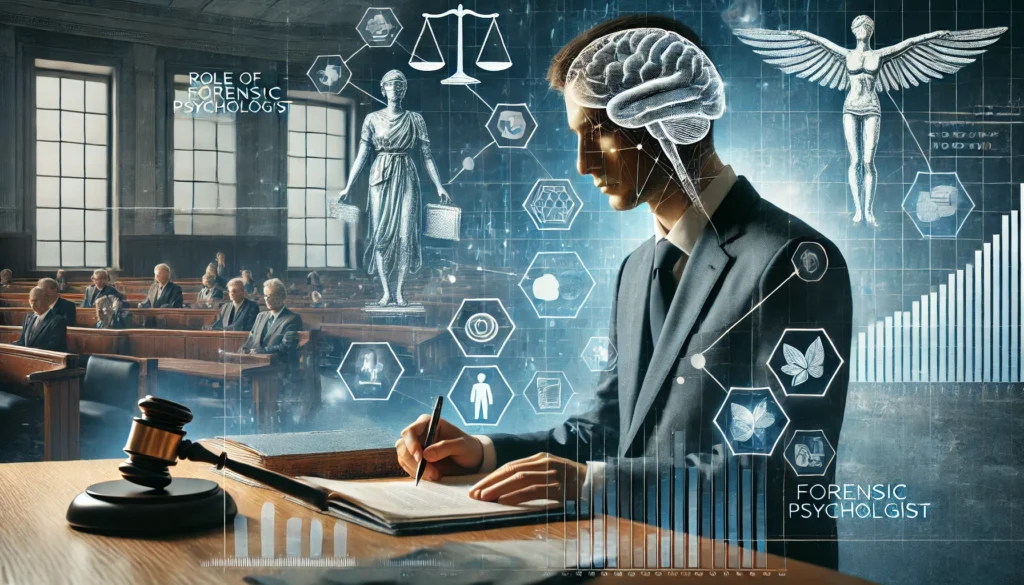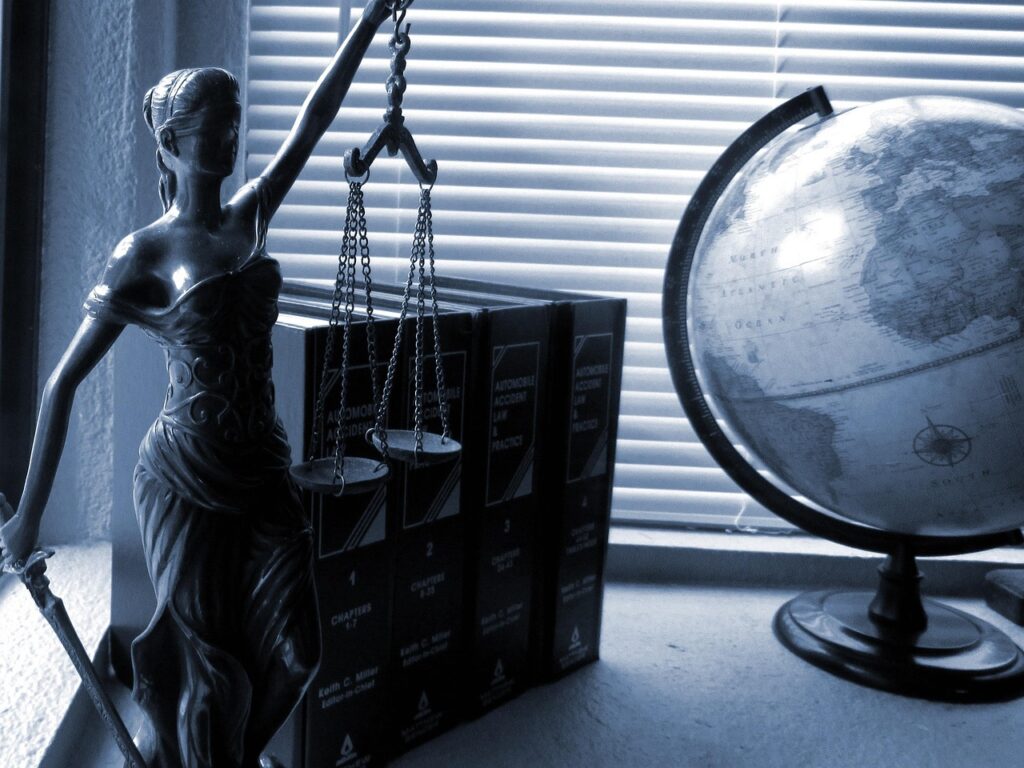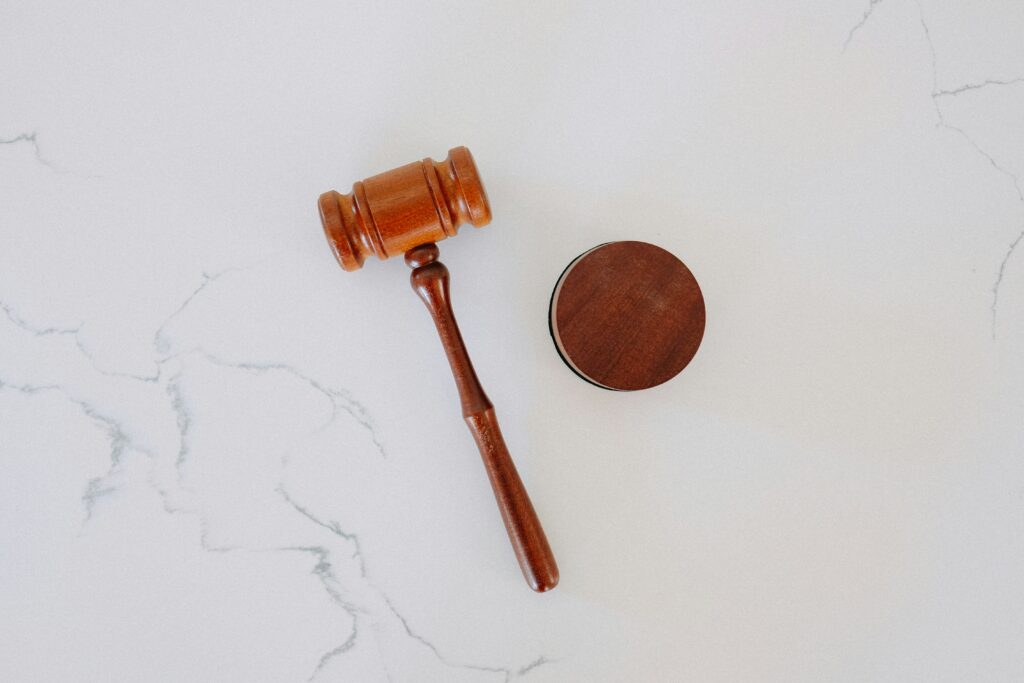Published On: October 15th 2025
Authored By: YASASWINI VOMMI
GITAM University
ABSTRACT
The evolution of digital technology has transformed artistic content’s creation, distribution, and audience engagement. This shift has led to increased copyright violations and challenges for creators and rights holders. India’s Copyright Act of 1957 and its amendments provide a legal framework to address these issues. The Information Technology Act of 2000 regulates digital content and intermediary responsibilities. Digital copyright enforcement faces challenges in identifying violators, managing jurisdictional regulations, and accessing infringing documents. This study evaluates these difficulties, assesses copyright enforcement through legal rulings and police involvement, and examines global standards. It also explores Digital Rights Management (DRM) and blockchain technology innovations. Ultimately, the study recommends policies to enhance copyright enforcement while protecting digital rights and ensuring knowledge access.
INTRODUCTION
The digital age has significantly changed content production, engagement, and sharing, driven by technologies like the internet, social media, and mobile devices. This transformation has simplified the creation and distribution of various digital content but has also posed challenges for copyright protection. Copyright has become a crucial issue for creators and publishers due to the ease of replicating and sharing content, leading to piracy and violations. Monitoring ownership and enforcing copyright laws can be complex and costly. Solutions such as digital rights management, watermarking, legal frameworks, and global cooperation have been introduced to protect rights, deter piracy, and promote responsible usage. As new technologies like artificial intelligence and blockchain continue to evolve, it is essential to adapt copyright safeguards while balancing accessibility and protection. The article examines copyright challenges in the digital landscape, addressing global reach, equitable use, user-created content, and the ongoing need for effective measures to uphold copyright while fostering responsible content interaction.
WHAT CONSTITUTES COPYRIGHT
According to TRIPS, copyright is a vital aspect of intellectual property rights, initially termed ‘Copier of words’ in the Oxford English Dictionary. It pertains to the original creation of artistic, literary, and dramatic works but has expanded to include protections for computer programs, codes, and languages due to technological advancements. In India, copyright is governed by the Copyright Act of 1957, amended in 2012, which grants creators exclusive rights to reproduce, publish, and distribute their work. It encompasses various forms, including literature, music, photography, and software, emphasizing the legal protection of original creations, whether offline or online, created without artificial intelligence. The Act defines “computer programme” under Section 2(ffc) as a set of instructions usable by machines, while Section 2(0) includes computer databases and compilations under “literary work.” The Information Technology Act of 2000 addresses cyber offenses and data protection, identifying “data” as information that enhances computer usability.
Internationally, the Beme Convention and TRIPS stress the necessity of copyright for digital materials. Despite India lacking a specific term for database protection, such databases fall under the software category in the Copyright Act. In contrast, the USA and Europe offer varied legal protections for databases. However, copyright infringement is rampant in the digital age, leading to significant financial losses for content creators who struggle to prevent piracy and unethical practices, undermining their efforts and investments in original content.
INDIA’S INITIATIVES TO SAFEGUARD DIGITAL COPYRIGHT
India’s copyright landscape has evolved through key amendments to the Copyright Act of 1957. Initially perplexing, the Act has been updated to address modern challenges. Significant changes include the 1994 Amendment, which protected computer software, and the 1999 Amendment aligning with the TRIPs Agreement to combat unauthorized use. The 2012 Amendment reinforces digital copyright and fair use principles in line with WIPO’s Internet Treaties. Additionally, copyright matters are also governed by related provisions in the Indian Penal Code and the Information Technology Act of 2000, ensuring comprehensive protection for creators.
Information Technology Act of 2000
The Information Technology Act of 2000 (IT Act) is an extensive legislation that regulates various concerns associated with information technology, encompassing cybercrime. The IT Act includes multiple sections that pertain to copyright law, such as:
Section 66A: This provision establishes that it is illegal to transmit offensive or defamatory communications via electronic methods. This clause has been applied to take legal action against individuals who have shared unauthorized versions of copyrighted materials on the internet.
Section 66B: This section establishes that it is unlawful to acquire or hold pirated digital materials. This measure aims to discourage individuals from downloading or sharing unauthorized copies of copyrighted materials.
Section 66C: This part establishes that it is illegal to alter or eliminate copyright protection from digital materials. This clause aims to safeguard the rights of copyright owners and to stop the unauthorized dissemination of copyrighted materials.
Indian Penal Code
The Indian Penal Code (IPC) is an extensive law that regulates various offenses, encompassing cybercrimes. The IPC comprises multiple clauses that pertain to copyright legislation, including:
Section 420: This section prohibits cheating or misleading another person. This clause has been utilized to bring charges against individuals who have distributed unauthorized copies of protected materials.
Section 465: This portion criminalizes the act of forging or counterfeiting a document. This clause has been utilized to take legal action against individuals who have created unauthorized reproductions of copyrighted materials.
Section 471: This section criminalizes the possession of stolen goods. This law has been utilized to charge individuals discovered with pirated versions of protected materials.
The Information Technology Act of 2000 provides detailed provisions for different kinds of cybercrimes such as hacking, copyright violations, piracy, and more.
The Digital Millennium Copyright Act in the USA offers legal guidance for internet service providers to submit complaints regarding cyber-crimes. India has incorporated certain aspects of it into its legislation to increase the rigor in enforcing the protection of digital content creators.
The Department of Education’s Copyright Division, part of the Ministry of HRD, declared the Copyright Rules of 2013. The revised regulations incorporated licensing and registration processes, storage of duplicates, and safeguards against violations for literary and musical creations, covering both performers and software developers. They were revised in 2016 and subsequently in 2021. The Copyright (Amendment) Rules of 2021 enhance transparency and accountability by implementing improved cyber security protocols, as with digital progress, all ministries have become digitally engaged and all government reports and data are available online. Concerning copyrights, the gathering of fees for licensing and registration, distribution of royalties, and collection of fines, among others, occurs electronically, enhancing regulatory measures.
CHALLENGES OF COPY RIGHT PROTECTION IN DIGITAAL INDIA
Online Piracy and Unauthorized Distribution: The illicit distribution of copyrighted material across various digital platforms is referred to as online piracy. Illegal streaming sites, file-sharing platforms, and peer-to-peer (P2P) networks enable users to share and download content without the permission of copyright owners or creators. The publishing, software, and entertainment industries incur significant financial losses due to disruptions in legal sales and distribution channels. Unapproved Distribution and Internet Piracy
Cross-Border Enforcement: The variation in copyright laws across countries makes enforcement difficult. Transnational violations of content lead to jurisdictional issues, and enforcement can be difficult due to differences in national legal frameworks, cultural views on piracy, and methods of enforcement. This complicates the global enforcement of copyright rights, leading to a fragmented set of laws and inconsistent protection.
Shortcomings of Digital Rights Management (DRM): DRM technologies aim to hinder unauthorized sharing and copying of digital material. Nonetheless, the efficiency of these protections is restricted as they are not foolproof and can be bypassed by clever users. Moreover, a tension exists between protecting intellectual property and maintaining consumer rights, as DRM may sometimes hinder legitimate uses of copyrighted material, such as transferring data between devices or making personal backups. Public campaigns and educational efforts are essential.
Education and Awareness: Many individuals unintentionally breach copyright due to insufficient understanding, and public awareness of copyright legislation is often inadequate. Encouraging more responsible actions can be achieved by educating individuals on the importance of respecting intellectual property rights and the legal consequences of piracy. To promote the use of ethical materials and decrease the occurrence of infringement incidents.
Responsibility of online platforms: Streaming services, file-sharing sites, and social media networks are crucial for the distribution of content. Their role in preventing copyright infringements is questionable, however. Although platforms such as Facebook and YouTube include systems like Content ID, they are not perfect and often permit abuse or delays in addressing copyright violations.
Harassing and Distributing Digital Files: Decentralized file-sharing platforms such as BitTorrent enable peer-to-peer (P2P) file sharing, complicating efforts to oversee and control the spread of copyrighted materials. Since these systems operate without a central server, users can share content anonymously, complicating the enforcement of copyright laws.
Stream Ripping: The act of obtaining and saving audio or video files from streaming platforms like YouTube, Spotify, or Netflix is referred to as “stream ripping.” Users often utilize third-party solutions to bypass Digital Rights Management (DRM) limitations and save content for offline access. Stream ripping jeopardizes the economic interests of artists, creators, and distributors by eroding their legitimate revenue streams, since these streaming services typically operate under agreements with content producers.
Plagiarism and Digital Alteration: Digital alteration involves the modification or reuse of copyrighted materials, often achieved by removing, altering, or merging them into unauthorized new creations. In the online realm, plagiarism happens when an individual replicates substantial parts of original creations and claims them as their own. This diminishes the uniqueness and commercial value of the creators’ intellectual property, while also violating copyright laws. It is particularly frequent in areas such as literature, digital art, and academic material.
Lack of Global Cooperation: Inconsistent global collaboration hampers copyright enforcement efforts. Copyright laws differ across countries, resulting in legal discrepancies that violators may exploit. Some types of digital piracy, for instance, may not be as rigorously regulated in various regions, creating safe zones for illegal activities. Without an international enforcement system, copyright owners struggle to protect their works globally.
Cyber lockers and Search Engines for Cyber lockers: Cyber lockers are web-based file storage solutions that allow users to upload and save data (such as Dropbox and Mega). While there are valid purposes for these services, they are often misused to share unlawful software, music, and movies. Cyber locker search engines (such as Google or dedicated sites) enable users to more efficiently find and access infringing information. Copyright holders may find it challenging to remove illegal content from these networks, especially when materials are rapidly shared, downloaded, and published.
COMPLEX APPROACH
Revise Copyright regulations: Given the challenges posed by digital distribution, internet piracy, and advancements in technology, copyright regulations need to be reassessed and modified to align with the digital landscape. Ensure that copyright regulations provide adequate protection for copyright owners.
Allocate Sufficient Resources: To effectively implement copyright regulations in the digital domain, provide law enforcement agencies and dedicated intellectual property divisions with the necessary tools and support. This involves allocating resources to tools and technology, training employees, and establishing efficient methods for investigating and addressing instances of copyright violation. Collaboration and Data Sharing: Promote collaboration and data sharing.
Collaboration and Data Sharing: To identify and prevent online piracy, promote collaboration and data sharing among copyright owners, technology companies, internet service providers (ISPs), and law enforcement agencies. Establish channels for immediate reporting, sharing of best practices, and procedures for removal.
Enhanced Digital Rights Management (DRM): Encourage the development of robust and user-friendly DRM systems that protect copyrighted content while minimizing restrictions on user rights. DRM systems must be adaptable, compatible, and capable of responding to evolving customer needs and emerging technologies.
Copyright Education Initiatives: Increase understanding and awareness of copyright laws, rights, and responsibilities among the public, educational institutions, creative professionals, and businesses. Develop educational resources and programs that promote ethical consumption, awareness of intellectual property rights, and their implications.
Methods for Watermarking and Tracking: Promote the implementation of tracking and watermarking technologies to identify and oversee copyrighted material, facilitating the detection and prevention of unauthorized use and distribution of piracy.
Education and Assistance for Creators: Provide independent artists and small enterprises the resources, guidance, and support necessary to navigate copyright issues, protect their works, and effectively monetize them.
Collaboration with Digital Platforms: Encourage the implementation of proactive strategies by social media networks, content-sharing sites, and online platforms to prevent and reduce copyright violations. This could involve establishing dependable content identification systems, providing straightforward methods for reporting breaches, and promoting responsible user behavior.
Anti-Piracy Coalitions: Promote partnerships among digital platforms, payment services, advertisers, and copyright owners to eliminate revenue streams for pirate sites, reduce piracy financed by ads, and prevent online violations through targeted measures.
User-friendly Access to Legal Content: By employing various business models such as subscription services, ad-supported platforms, and flexible pricing options, enhance the availability and affordability of legitimate digital content. This promotes the use of lawful means and reduces the motivation for users to resort to piracy.
User Experience and Convenience: Ensure that legal content platforms offer a wide variety of content, easy accessibility, and attractive features that meet or exceed those of pirated platforms. This will enhance the user experience, ease of use, and worth of these platforms.
Inquiry and Collaboration: Promote increased research on copyright issues in the digital age, including user behavior, piracy trends, and the effectiveness of anti-piracy efforts. Research can influence this Policy choice, business practices, and the development of innovative solutions.
Collaboration Among Stakeholders: Foster cooperation and dialogue among relevant parties, such as copyright holders, technology companies, lawmakers, educational institutions, and consumer advocacy groups. Engage in discussions with various stakeholders to develop equitable and realistic copyright protection strategies.
CONCLUSION
To sum up, the digital age has introduced numerous difficulties for copyright safeguarding. Nonetheless, it has also offered new resources and technologies to assist content creators and publishers in safeguarding their rights. Through the adoption of strategies like digital rights management, watermarking, and informing users about copyright regulations, the issues arising from the digital age can be effectively tackled.
Continuing to monitor new technologies and their influence on copyright protection is crucial, as well as seeking a balance between accessibility and safeguarding. By implementing appropriate measures, we can sustain the encouragement of creativity, innovation, and the responsible utilization of copyrighted content in the digital era.
REFERENCES
- https://www.legalserviceindia.com/legal/article-10639-copyright-protection-in-the-digital-age-challenges-and-solutions.html#google_vignette
- https://nopr.niscpr.res.in/bitstream/123456789/44436/1/JIPR%2022%286%29%20303-310.pdf
- https://www.pib.gov.in/newsite/PrintRelease.aspx?relid=93921
- https://www.mylawman.co.in/2021/04/law-notes-indian-copyrights-act-1957.html#google_vignette
- https://legalresearchandanalysis.com/copyright-infringement-in-digital-age/
- https://tijer.org/tijer/papers/TIJER2503122.pdf
- https://ijcrt.org/papers/IJCRT2304570.pdf




